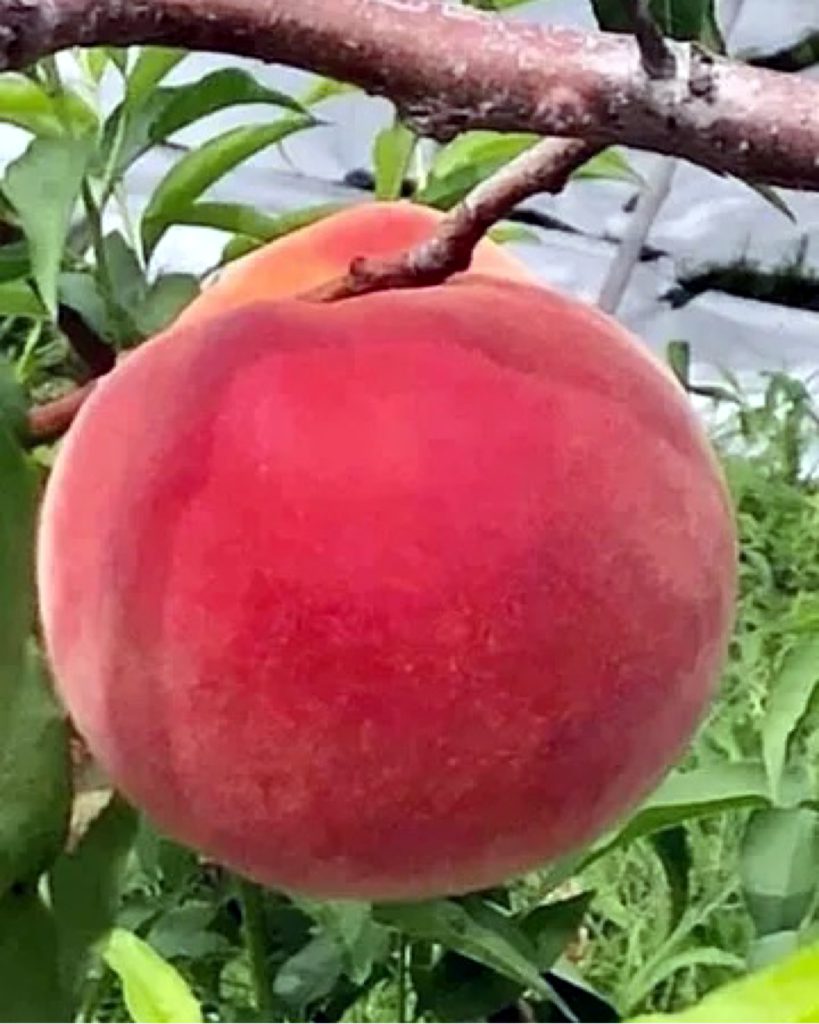
Momotaro’s general image is to put up a jinbaori (sleeveless campaign jacket worn over armor) and a nobori (flag) on the Hinomaru headband, give a Kibi-dango to dogs, birds, and monkeys to make them “servants” and exterminate demons. This image was established in the Meiji era, and it was adopted in textbooks, and it is associated with the national policy for making one’s country wealthy and militarily strong after the Meiji era. The exact date of Momotaro’s story is unknown, but it is said that it was probably from the end of the Muromachi period to the beginning of the Edo period, and it seems that it was a simple poetic justice story. The peaches were introduced from China, the place of origin, during the Jomon period, and since then they have been used mostly for medicinal and ornamental purposes. In the Meiji era, sweet peaches such as Shanghai peaches were imported and spread for food. Especially in Okayama prefecture, it seems that the above Momotaro story was completed and used for national policy in order to connect the imported water peach and Kibi dango to appeal the water peach from the prefecture.
日の丸の鉢巻に陣羽織、幟を立てて、犬や鳥、猿に吉備団を与えて「家来」にし、鬼退治をする、これが桃太郎の一般的なイメージです。このイメージが定着したのは明治時代に入ってからで、教科書にも採用され、明治以降の富国強兵の国策に付合します。桃太郎の物語としての成立年代は正確には分かっていませんが、おそらく室町時代末期から江戸時代初期ころだろうと言われていて、素朴な勧善懲悪物語だったようです。桃が原産地の中国から伝わったのは縄文時代で、それ以降はもっぱら薬用・観賞用として用いられたようです。明治時代になって、上海水蜜桃などの甘味の強い水蜜桃系の桃が輸入され、食用として広まりました。特に岡山県では、移入した水蜜桃と吉備団子を結び付けて県産の水蜜桃をアピールする為に上記の桃太郎物語が出来上がり、国策にも利用されたようです。
